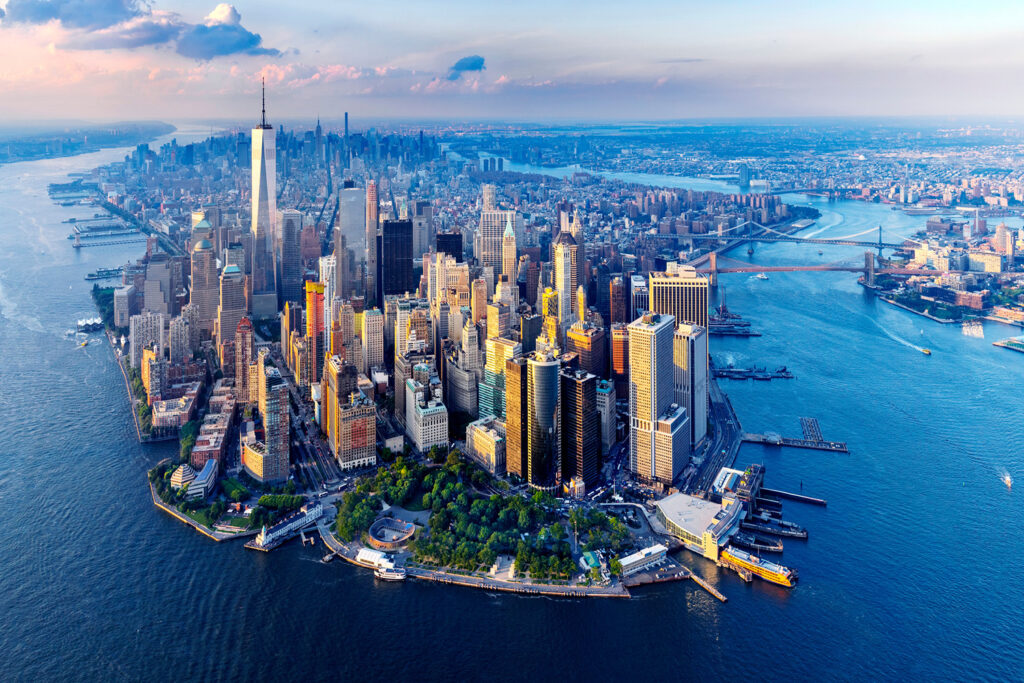6 ways to help a major city comply with EU air pollution regulations
The UK government was recently issued a final warning by the European Commission for persistently breaching air pollution limits. We explore this issue and provide six practical ways to help city leaders.
Poor air quality is directly linked to a number of health impacts, ranging from short-term irritation to chronic illnesses and premature death. In particular, pollutants such as nitrogen dioxide and particulate matter cause inflammation of the airways and eye irritation. Over time, exposure to poor air quality is linked to reduced lung function and other respiratory illness as well as lung cancer and cardiovascular disease. Outdoor air pollution is responsible for approximately 40,000 premature deaths per year in the UK, according to the Royal College of Physicians.

In addition to placing a burden on the health services, air pollution also affects businesses and the wider economy, with the cost to the UK estimated by the World Health Organisation to be approximately £54 billion each year.

Under EU law, member states must comply with air pollution ‘limit values’ which are set to protect public health and the environment. Where these limit values are exceeded, member states must draw up a plan which outlines how compliance will be achieved as soon as possible.

Although the responsibility for meeting these limit values lies with the secretary of state, local authorities are required under Part IV of the Environment Act to review and assess air quality within their administrative boundaries, drawing up action plans to improve air quality where necessary.

UK local authorities have declared a total of 717 air quality management areas, where pollutant concentrations are unlikely to comply with EU air quality limit values. These areas vary in size from small stretches of road or plots of houses to entire boroughs (as is the case for most of Greater London in particular).

Improving air quality must take a multidisciplinary approach, and will require different areas of expertise working alongside one another to help solve the problem. This article outlines the different areas that should be considered (transport, new development, exposure, monitoring and educating) and suggests improvement measures for cleaning up the air we all breathe.

1. Cleaning up the vehicle fleet & increasing active transport
For the vast majority (86%) of air quality management areas, the predominant source of pollution is road transport.
Increased use of highly polluting diesel vehicles has been compounded by the failure of vehicle emission standards to bring about real world emission improvements, as highlighted by the now infamous Volkswagen scandal.
Moving away from polluting vehicles (particularly diesel) and towards zero emission transportation is therefore essential to improving air quality.
Currently in the UK the most polluting vehicles are taxed at the same rate as the least polluting- vehicle excise duty is based on CO2 emissions in order to reduce greenhouse gas (GHG) emissions, it does not take into account emissions of the most problematic air pollutants.
Although increasing taxes on the most polluting vehicles would be the responsibility of central government, there are a number of measures that could be implemented to discourage the most polluting vehicles, including introducing parking charges based on vehicle emissions, or an emissions based congestion charge.
Actions must be underpinned by commitments to increase provision for zero emission vehicle infrastructure and pedestrian/cycle friendly areas in cities, in order to ensure the least polluting modes of transport are the most attractive to use and easily accessible.
2. Building Clean, Green, Energy efficient developments
Ensuring new developments are designed with air quality in mind can help play a significant role in improving local conditions. Domestic heating is a major contributor to background pollutant concentrations, therefore by using clean energy sources-for example low NOx district heating networks, or water/river/ground source heat pumps to provide on-site heating significant improvements can be made. Low emission heat provision along with energy efficient design will help minimise the impact from new developments with benefits for both air quality and climate change.
The use of backup diesel generators in particular should also be avoided, with a 1MW diesel generator giving rise to average NOx emissions equivalent to traffic along a 1km stretch of the M25.
The utilisation of urban greening, especially green walls, is also an effective way of removing pollutants from the air. Studies have shown that green walls can reduce particulate matter concentrations by up to 60%. Tree planting to provide barriers to busy roads can also protect sensitive areas from high concentrations of air pollution.
3. Reducing exposure of the most vulnerable
Pollution levels can vary greatly from street to street, and different members of the public will be more susceptible to the harmful effects of poor air quality (children and the elderly in particular are most at risk). It is therefore essential that cities are designed to ensure those most at risk are located as far away as possible from pollution sources.
Recent studies have shown that 328,000 children attend schools in London where NO2 concentrations exceed the EU limit value, representing nearly 25% of all pupils in London.
School classrooms or playgrounds should therefore be relocated away from busy roads in order to have a dramatic effect on reducing the daily exposure of school children.
4. Monitoring
All proposed improvement measures should be underpinned by a network of pollutant monitoring in order to identify trends and understand what works. Effective air quality monitoring allows us to see how air quality changes over time and allows the identification of hotspots.
Monitoring also allows us to verify pollutant modelling, which, allowing us to test ‘what if’ scenarios, for example ‘How much will air quality improve if we decrease traffic numbers in a particular area by 20%?’, or ‘What will happen to air quality in the local area if we remove this car park?’
5. Educating
Increasing awareness and educating the general public so they can make sensible, well informed choices is vital if we want to see effective, long-term improvements to air quality. Engaging with children from an early age can help instil better habits and encourage positive behavioural change that will create lasting improvements and multiple benefits.
Some schools are introducing air quality education into their curricula and even conducting air quality surveys in school grounds. Hands-on activities are another way of engaging children with the topic and curricular and extra-curricular initiatives in the US including ‘build your own air quality sensor’ kits and interactive board games have been successful in teaching children about the importance of air quality.
With the prevalence and ease of use of so many apps and sensors in our daily lives from smartphones to tablets and watches there is huge potential for the public to take a more proactive and engaged role in air quality awareness. This could include receiving alerts and being aware of high risk areas or times as well as sharing and uploading air quality relevant data. Greater air quality understanding should also encourage those aware of the issues to make more positive decisions when it comes to vehicle use and travel, and improve awareness of the potential health impacts
6. Embracing the shareconomy and new technologies
Embracing new technologies such as Connected and Autonomous Vehicles (CAVs) and ride sharing services, may offer significant long term environmental benefits to air to cities.
By sharing CAVs with others we could operate fewer vehicles through better utilisation of vehicle stock. Firstly, shared vehicles are likely to reduce the number of vehicle trips made by city citizens, in particular when similar trips can be matched and a vehicle is shared to make the trip – as already demonstrated by UberHop. Secondly, when vehicles are in use, whether they operate using V2I or V2V connectivity, they will require less road space than manually driven vehicles. This is due to their ability to react in real time to their surroundings, including inanimate and animate objects. This will allow traffic to take up less space in a city, including reducing and narrowing road lanes to make more room for pedestrians and cyclists.
Car manufacturers developing CAVs appear to be focusing on alternative fuels such as electricity or hydrogen to match their high-tech image, this trend is likely to continue in order to ensure that these advanced vehicles run as efficiently as possible.
Incentivising the use of CAVs and sharing technologies when the technology is readily available, along with a ready supply of charging points and other infrastructure needed could encourage those living in our most polluted cities to move away from car ownership altogether.





